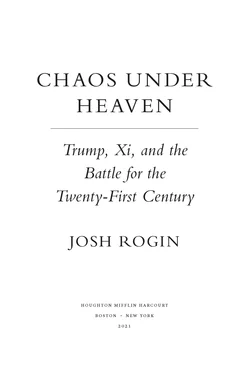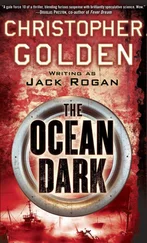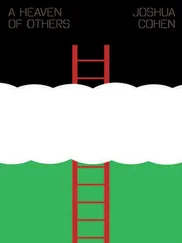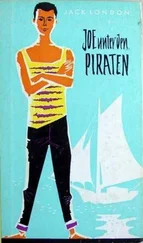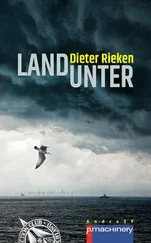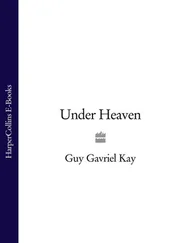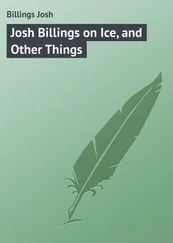The original government story was that the new virus had originated in the Huanan seafood market in Wuhan, which had been connected to some of the early cases. Authorities started establishing this story early on, while at the same time ensuring that it could never fully be either proven or disproven. There were early signs the officials in Wuhan were focused on the market, even as public information about the emerging outbreak was still being suppressed. On January 1, Wuhan authorities completely emptied and then sanitized the Huanan market. But they didn’t take blood or other fluid samples from the animals or workers, meaning any evidence that might tie the origin of the virus to the market was destroyed. A study by Chinese researchers published in the prestigious medical journal the Lancet would later find that the earliest known case, identified on December 1—and over a third of the cases in the first large cluster—had no connection to the market, making it unlikely that the virus had originated there. But at first, Beijing pointed to the seafood market as the source of the outbreak—while simultaneously making sure that later investigators would never be able to prove or disprove the link.
Chinese authorities would later reveal that the Wuhan Institute of Virology (WIV), the world’s leading research center for bat coronaviruses, had mapped out the genome by January 2. They had determined from samples collected that the virus was a SARS-like coronavirus, which plainly meant that they were dealing with a pathogen that was dangerous, was highly contagious, and had no known vaccine.
Any information about the virus’s genome would be critical to containing its spread and starting the research for a cure—but the Chinese authorities had sat on that vital information as the virus spread. On January 5, the Shanghai Public Health Clinical Center alerted Chinese authorities that it had also successfully identified and mapped the genome of the new virus. The government forbade them from sharing that information. Six days later, the researchers defied that order and released the genome publicly. The lab was shut down the next day for “rectification.”
The WHO began regurgitating Beijing’s bad information about the virus from the very start. On January 14, the organization tweeted, “Preliminary investigations conducted by the Chinese authorities have found no clear evidence of human-to-human transmission of the novel #coronavirus (2019-nCov) identified in #Wuhan, China.” That same day, talking on an internal conference call with provincial officials, National Health Commission chief Ma Xiaowei reportedly called the virus “the most severe challenge since SARS in 2003” and said that “clustered cases suggest that human-to-human transmission is possible.” Beijing didn’t communicate that urgent update to anyone outside official Chinese government channels for another six days. In the meantime, millions of Chinese citizens traveled around the country for the Lunar New Year festivities, including in Wuhan, fueling the outbreak.
It was January 21 when a WHO delegation was allowed into Wuhan and found that in fact there was evidence of human-to-human transmission, confirming the comments of Zhong Nanshan, the scientist at the head of Beijing’s response effort, the day prior. Still, the WHO declined to name the crisis a “public health emergency of international concern.” Two days later, Chinese authorities locked down the entire city of Wuhan. On January 30, the International Health Regulations Emergency Committee (a WHO body) praised the Chinese government’s “commitment to transparency” in a statement. On February 3, WHO director-general Tedros Adhanom Ghebreyesus praised China’s strategy and credited Beijing for preventing even more cases.
The WIV, just a few miles from the seafood market, was ordered to destroy its samples of the virus and not to share them with American researchers from a Texas lab they had been working with. Major General Chen Wei, the Chinese military’s top epidemiologist and virologist, was sent to take over the lab. Researchers, journalists, and doctors who posted nonapproved information about the virus were rounded up and disappeared.
Meanwhile, the virus kept spreading. Li—one of the original “gang of eight” who had posted about the disease on social media and were detained for their trouble—contracted the disease from a patient he was treating; from his hospital bed, the doctor told the New York Times, “If the officials had disclosed information about the epidemic earlier, I think it would have been a lot better. There should be more openness and transparency.” On February 7, he died.
Just as they had done during the SARS campaign, during the early days of this new coronavirus epidemic, the Chinese authorities mounted a concerted effort to present a false picture to the world. They also missed key opportunities to stop the outbreak early in its tracks, by warning the public about human-to-human transmission, stopping travel out of Wuhan earlier, and sharing the information they had with international scientists and foreign governments.
For those who had studied the Chinese government’s actions during the SARS crisis, these tactics were no surprise—in fact, they were predictable. The CCP’s paranoia, defensiveness, and overall lack of concern for things like truth and transparency are part of its character. But now, for the first time, those deficiencies threatened to kill thousands of Americans.
The Propaganda War
For the first few weeks of the crisis, the State Department maintained fairly good and constructive communication with their Chinese counterparts. The State Department needed to keep close watch on American diplomats and their families and eventually sent planes to Wuhan to extract them. Those planes brought crucial medical equipment for Wuhan hospitals in their time of need. China mounted its own aid offensive as well. By the end of March, China had delivered aid to 120 countries, a massive “mask diplomacy” effort. Early on, these Chinese efforts were widely welcomed—but later, “mask diplomacy” would become synonymous with China’s use of aid as a means of leverage over countries that might want to criticize it or its handling of the coronavirus outbreak that had begun within its borders.
The cooperation between the US government and Chinese authorities largely ended after Trump announced the China travel ban. The Chinese government feared that other countries would follow suit, casting blame on China and potentially hurting the Chinese economy. So Beijing launched a worldwide campaign to deter other countries that were thinking about banning travel from China. Foreign Minister Wang Yi told his Indian counterpart on February 1 that China “opposes certain countries’ actions that are creating tension and causing panic.”
As the United States began to deal with its own outbreak, Trump continued to downplay the virus’s severity. Pottinger’s and Navarro’s pleas to Trump to take the pandemic more seriously might have had more effect, if it were not for another voice countering their message in Trump’s ear—that of Xi Jinping.
Trump and Xi had a lengthy telephone conversation that was presented as evidence to Americans that the outbreak was under control in China and that the trade deal was intact. “President Trump expressed confidence in China’s strength and resilience in confronting the challenge of the 2019 novel coronavirus outbreak,” the White House said in a statement after the call, adding, “The two leaders agreed to continue extensive communication and cooperation between both sides. They also noted the great achievement of the recent United States—China Phase One Trade Deal and reaffirmed their commitment to its implementation.
But in fact, Xi worked hard to ply Trump with misinformation on February 6, according to a senior administration official who was on the call. And Trump had come away from it with a decidedly warped view of the threat.
Читать дальше
